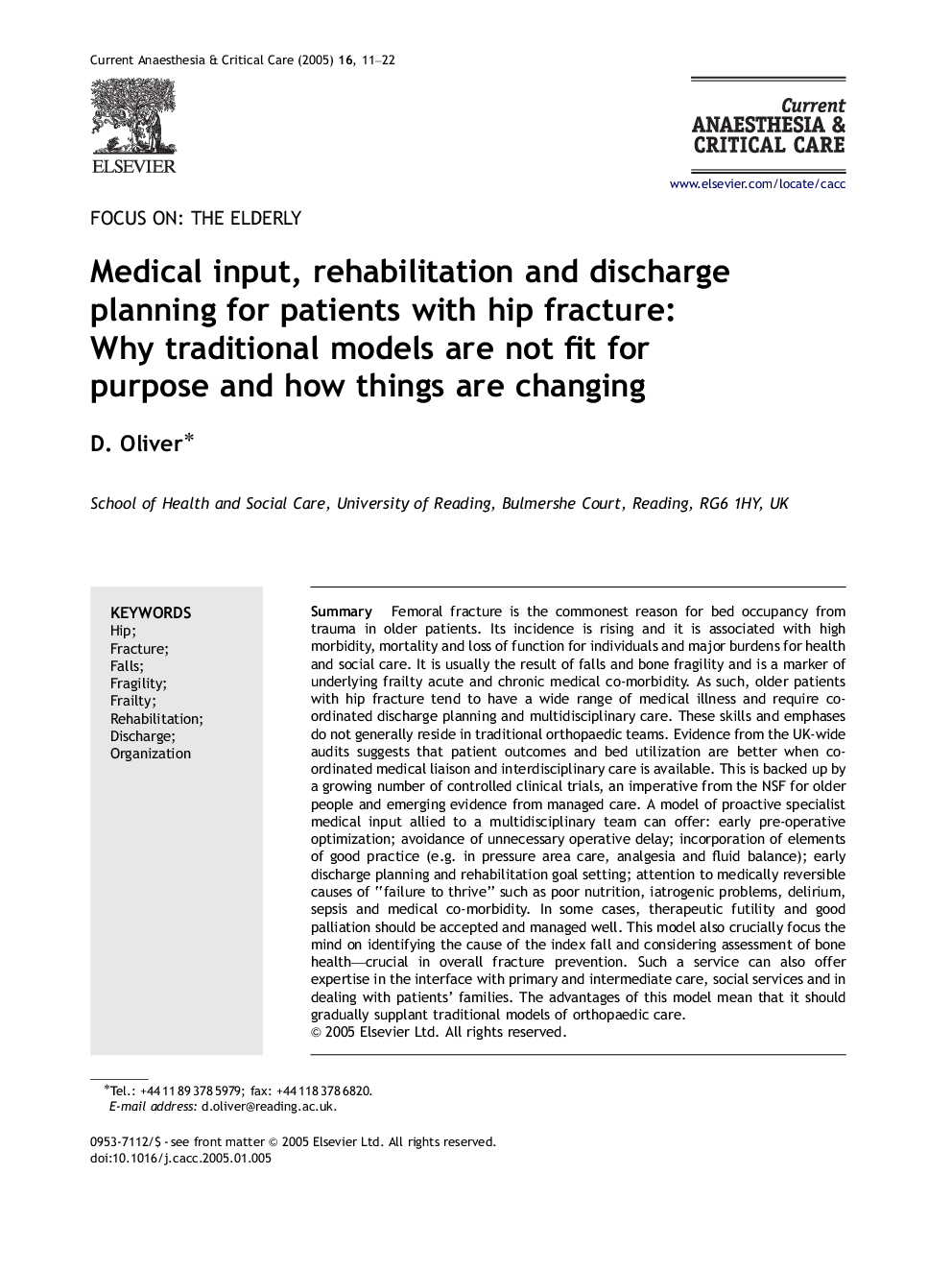| کد مقاله | کد نشریه | سال انتشار | مقاله انگلیسی | نسخه تمام متن |
|---|---|---|---|---|
| 9041016 | 1134378 | 2005 | 12 صفحه PDF | دانلود رایگان |
عنوان انگلیسی مقاله ISI
Medical input, rehabilitation and discharge planning for patients with hip fracture: Why traditional models are not fit for purpose and how things are changing
دانلود مقاله + سفارش ترجمه
دانلود مقاله ISI انگلیسی
رایگان برای ایرانیان
کلمات کلیدی
موضوعات مرتبط
علوم پزشکی و سلامت
پزشکی و دندانپزشکی
بیهوشی و پزشکی درد
پیش نمایش صفحه اول مقاله

چکیده انگلیسی
Femoral fracture is the commonest reason for bed occupancy from trauma in older patients. Its incidence is rising and it is associated with high morbidity, mortality and loss of function for individuals and major burdens for health and social care. It is usually the result of falls and bone fragility and is a marker of underlying frailty acute and chronic medical co-morbidity. As such, older patients with hip fracture tend to have a wide range of medical illness and require co-ordinated discharge planning and multidisciplinary care. These skills and emphases do not generally reside in traditional orthopaedic teams. Evidence from the UK-wide audits suggests that patient outcomes and bed utilization are better when co-ordinated medical liaison and interdisciplinary care is available. This is backed up by a growing number of controlled clinical trials, an imperative from the NSF for older people and emerging evidence from managed care. A model of proactive specialist medical input allied to a multidisciplinary team can offer: early pre-operative optimization; avoidance of unnecessary operative delay; incorporation of elements of good practice (e.g. in pressure area care, analgesia and fluid balance); early discharge planning and rehabilitation goal setting; attention to medically reversible causes of “failure to thrive” such as poor nutrition, iatrogenic problems, delirium, sepsis and medical co-morbidity. In some cases, therapeutic futility and good palliation should be accepted and managed well. This model also crucially focus the mind on identifying the cause of the index fall and considering assessment of bone health-crucial in overall fracture prevention. Such a service can also offer expertise in the interface with primary and intermediate care, social services and in dealing with patients' families. The advantages of this model mean that it should gradually supplant traditional models of orthopaedic care.
ناشر
Database: Elsevier - ScienceDirect (ساینس دایرکت)
Journal: Current Anaesthesia & Critical Care - Volume 16, Issue 1, February 2005, Pages 11-22
Journal: Current Anaesthesia & Critical Care - Volume 16, Issue 1, February 2005, Pages 11-22
نویسندگان
D. Oliver,